

The mysterious Nazca Lines and Paracas are must-see highlights in the southern desert region of Peru. Browse our complete Nazca destination guide for interesting historical insights, top attractions, and travel tips.
Homebase for Nazca Lines tours, the city of Nazca (also spelled Nasca or Naska) is usually a quick stopover on the overland route between Lima and the Andes of Peru. But for travelers seeking full immersion into the mysteries of South America’s most puzzling archaeological site, a longer stay is in order.
The main thing to do in Nazca is to embark on a flight tour. After that, enjoy a small collection of museums and archaeological sites that delve into Nazca culture. Visit the Maria Reiche Museum, the Cantalloc aqueducts, and book a spot for the evening show at the Nazca Planetarium.
High temperatures and extreme aridity characterize the desert region of Nazca. With annual precipitation around 4mm, rainfall is almost nonexistent throughout the year, making this area between the Pacific Ocean and the Peruvian Andes one of the driest deserts in South America.
Summer in the southern hemisphere extends from December to March. For the city of Nazca, this means a lot of sunshine and daytime highs of 90°F (32°C). Winter months from May to September experience slightly lower daytime highs of around 80°F (27°C) and cooler nighttime lows 55°F (13°C).
The Humboldt Current and the El Niño Oscillation System are key elements in the region’s geography and climate. Flowing up the Pacific coast from Antarctica, the cold water current cools air temperatures. This prevents the accumulation of moisture and results in minimal rainfall. These dry, windless conditions have also been key in the preservation of the Nazca Lines over thousands of years.
The desert weather and nearly zero rainfall make Nazca a year-round destination for travelers intent on getting a glimpse of the Nazca Lines. The high season is from December to March when it is summer in the Southern Hemisphere.
Flights over the Nazca Lines take off as early as 7 am to continue throughout the day. Usually, wind conditions and visibility make mornings the best time to fly over.

The pre-Inca Nazca culture flourished in Peru’s river valleys of the Rio Grande and Ica, and are most famous for the Nazca Lines, ancient geoglyphs etched into the hard desert floor between 200 BC and 500 AD. (The Nazca culture was directly descended from the Paracas culture.)
Scientific understanding of the lines of Nazca is still very limited. Since their discovery in 1927 by Peruvian archaeologist Toribio Mejia Xesspe, who believed the lines were sacred roads, researchers have sought answers to lingering queries: Why were they constructed? Were aliens involved?
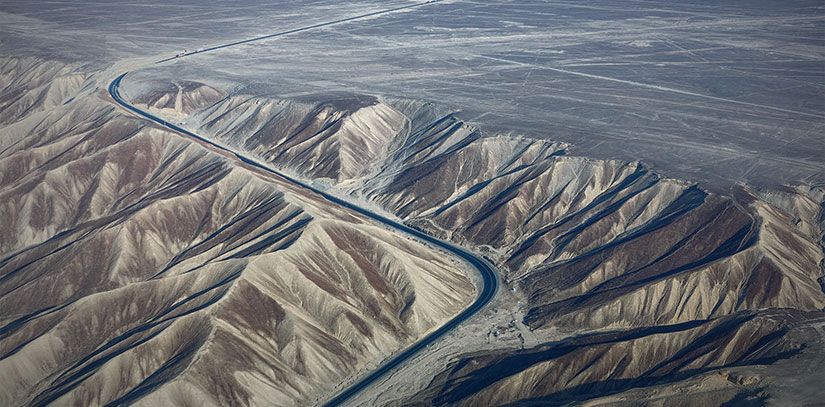
In 1939, US scholar Paul Kosok first observed the now-famous geoglyphs when he hired a plane to take him over the abounding desert terrain while investing irrigation systems nearby. Finding that some of the Nazca geoglyphs align with the winter solstice and constellations, Kosok called the lines “the world’s largest astronomical book.”
German mathematician Dr. Maria Reiche took over the study of the lines from her mentor Kosok. For the next five decades, she devoted her life to deciphering the enigma of the geoglyphs. She proposed that Nazca Lines were a very complex system of agrarian calendars and sites of astronomical observations that allowed the Nazca culture to thrive in an otherwise hostile environment. She wrote a seminal study of the Nazca Lines titled The Mystery of the Desert in 1949.
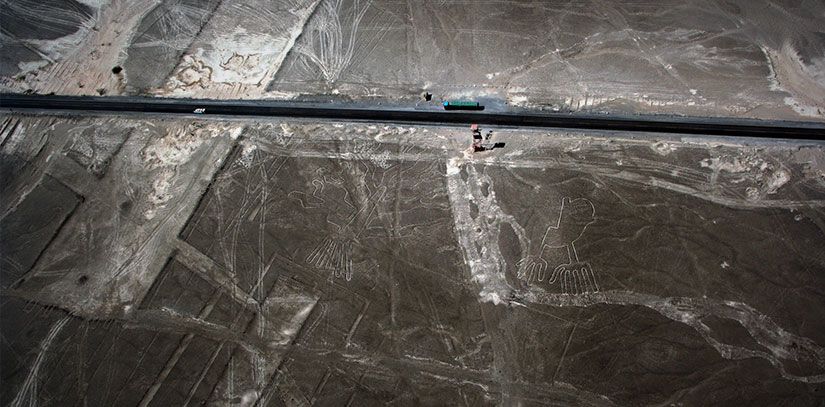
Another more colorful contributing theory about the Nazca Lines was offered by science-fiction writer Erich von Daniken who suggested the lines were airstrips for alien spacecraft.
The perplexing riddle of the Nazca Lines caught the attention of UNESCO and in 1994 they were declared an Archaeological World Heritage Site. The debate regarding the significance of the lines rages on, generating more questions than answers. But one must also acknowledge that the lingering mystery is part of the appeal.
The Nazca Lines extend across a surface area of 175 square miles (450 square kilometers). There are two main groups of lines, the first and most famous near Nazca city, and the second further north near Palpa. The shapes create the outlines of seventy animal and plant shapes, plus a hodgepodge of geometric designs such as swirls, rectangles, straight lines, and trapezoids.
Among the most famous Lines are the Hummingbird, Monkey, and Spider found near the town of Nazca. The so-called Nazca Lines Astronaut has received a lot of attention because of its resemblance to an extraterrestrial. Maria Reiche suggested the symbol represents a shaman, a religious and spiritual leader. Their role was to mediate between the deities represented on the ground and the agrarian cycles Nazca people intended to decipher.
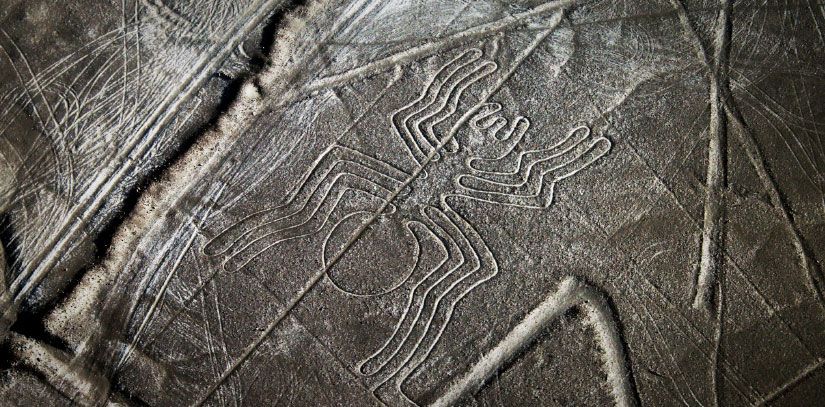
The enormous scale of these ancient lines boggles the mind and suggests highly complex geometric calculations and an even more sophisticated system of cords to trace the lines and draw figures. The Monkey, for instance, measures 277 feet (84.5 meters) from outstretched arm to twirled tail – that’s approximately three-quarters the length of an official FIFA soccer field! Consequently, the best way to admire the Nazca Lines is from a low-flying aircraft.
Curiously, the Nazca Lines have resisted significant erosion over the years because they exist in one of the driest spots on earth with very limited rainfall that might wash away the remains. Today encroaching squatters in the region pose the largest threat to the preservation of the lesser-known Nazca Lines.
The town of Nazca is connected to Lima by the Panamerican Highway. Taking the bus from Lima to Nazca is easy and takes between six and seven hours. There is no commercial airline service between Lima and Nazca. The small airport in Nazca, Aeropuerto Maria Reiche Neuman, is a few miles outside the city but it’s mostly used for flight tours.
Total distance from Lima (Miraflores district) to Nazca: ~300 mi (~480 km)
Seasoned pilots fly at tilted angles and in tight circles to give passengers the best views of the Nazca Lines. This jerky movement, paired with some turbulence, can definitely make you feel queasy. It’s best to plan ahead and bring a motion sickness patch or remedy for your flyover tour. If you tend to get motion sick, consider skipping a flight and opt instead to learn about the giant glyphs on a tour to the Maria Reiche Museum and Observation Tower.
Nazca and the Ica region are fairly safe and travelers are advised to take precautionary measures in Nazca as well as other South American destinations. Only carry what you’ll need for your daily outing and leave extra cash, bank cards, and valuables in your hotel room lock box. At night, stick to well lit, populated streets.
The biggest “threats” are the touts in front of the bus station who are always looking to arrange hotels and tours at exorbitant prices. It’s best not to deal with them at all.
We don’t recommend hailing a taxi from the street. Instead, have your hotel receptionist arrange a safe taxi ride for you to get around quickly or call a ride on your phone using Uber, Beat, or Easy Taxi.


If you would love to see the Nazca Lines, but motion sickness is the major reason why you would not book a flight, you can instead climb the Observation Tower (43 feet, or 13 meters high) for a satisfying look at the Tree and Hands Nazca Lines up close. Further in the distance and on clear days, you can see the highway cutting through the Lizard glyph.
Torre Mirador is 12.5 mi (20 km) to the north of Nazca city along the Panamerican Highway.
Formerly the home of Dr. Maria Reiche, a German mathematician who dedicated her life to the study of the enigmatic Nazca Lines. This small museum preserves a clutter of maps, diagrams, photographs, artifacts, and a scale model of the Nazca Lines, as well as Reiche’s personal belongings. She was a devoted scholar whose work led to the Nazca Lines’ UNESCO world site designation in 1994. Museo Maria Reiche is worth a stop in combination with the Observation Tower. Read more about Maria Reiche in the History section above.
Km 421 Panamerican Highway
Cahuachi was a pre-Columbian ceremonial center in use from 1 AD until 500 AD. The type and number of artifacts uncovered at the site indicate that this was a pilgrimage site occupied for pan-Andean ceremonies. Its importance began to wane with the decline of the Nazca culture around 300 AD. Significant structures include a large adobe pyramid of 490 feet (150 meters) long and 90 feet (28 meters) tall, as well as 40 natural mounds topped with adobe structures. Wander the archaeological complex on your own or a guided tour.
Cahuachi is 15 mi (24 km) west of the city of Nazca.
Acueductos de Cantalloc preserve is the best example of the ingenious aqueducts constructed by the Nazca culture. They constructed amazing works of hydraulic engineering that allowed them to thrive in the arid environment. With access to water, the Nazca culture could irrigate the desert land for agriculture and grow crops. More than thirty of these still function today, which locals use to irrigate their farms. Openings in the channels, called puquios, are arranged in spirals or concentric circles and provide access to the channels for maintenance and cleaning.
The Cantalloc Aqueducts are 3 mi (5 km) from the Plaza de Armas of Nazca.
The small but extensive Museo Arqueologico Antonini displays Nazca mummies, artifacts, pottery, textiles, and more. Learn about the geography of the desert coast where early civilizations flourished and how to decipher the symbols and iconography that decorate Nazca pottery and textiles. Additional holdings include photos of famous glyphs and trophy heads found at Cahuachi.
Avenida La Cultura 600, Nazca
Planetarium Maria Reiche lets visitors see the stars, moon, and planets through modern telescopes while also remembering Reiche’s intensive research and incredible accomplishments in fostering recognition for one of Peru’s most popular tourist attractions. Interesting lectures on the lines, based on Reiche’s teachings and focused on astronomy and archaeology, are given daily.
Jr. Bolognesi (no number), Nazca
The pre-Inca necropolis of Chauchilla is home to mummies and other ancient remnants perfectly conserved by the arid Nazca desert. Most of the site has been sacked of its archeological treasures, yet Cemeterio Chauchilla is unique because its mummies are still in original tombs - rare in Peru - and it was used successively by the Wari, the Poroma, and the Inca cultures. The Chauchilla Cemetery has been protected since the late 1990s.
Chauchilla is 18 mi (29 km) from the Plaza de Armas of Nazca.
“Los Paredones” represents the remnants of an Incan administrative complex that monitored passage between the mountains and the coast. Built during the reign of Tupac Yupanqui and on top of Nazca ruins, the archaeological site includes a central plaza, buildings for administrative, ceremonial, and residential purposes, and a mix of adobe and stone walls. The latter is rarely seen on the Peruvian coast and displays the Inca style of polished stone architecture.
Los Paredones is 1 mi (1.6 km) from the Plaza de Armas of Nazca.
Duna Cerro Blanco sits at 6,820 feet (2,078 meters) above sea level, making it the tallest dune in Peru and one of the highest in the world. Get up close to this geographic landmark in the Nazca region during a guided sandboarding tour. Dune buggies can’t get to the top. Instead, you walk yourself and your board about three hours to the summit. The last hour on soft sand is especially tough, but the payoff is an incredible descent paired with astounding views of the desert landscape.
Cerro Blanco is about 12 mi (20 km) outside of Nazca city.The once sleepy desert town of Nazca has increased with popularity, though the number of comfortable hotels are still quite limited compared to other destinations in Peru. For this reason, our recommendation is for travelers keen on doing a flyover tour to use Paracas as their base for exploring the country’s southern coast highlights and depart from the airport in Pisco.
However, for travelers who desire an extended stay in Nazca for a deeper investigation into the Nazca culture, the established Casa Andina Standard Nasca is our preferred option.
The following top-ranked restaurants in Nazca are near the Plaza de Armas. If you are passing through town to catch a bus to your next destination, these dining options are within convenient walking distance to stations for Cruz del Sur, Civa, and Oltursa.

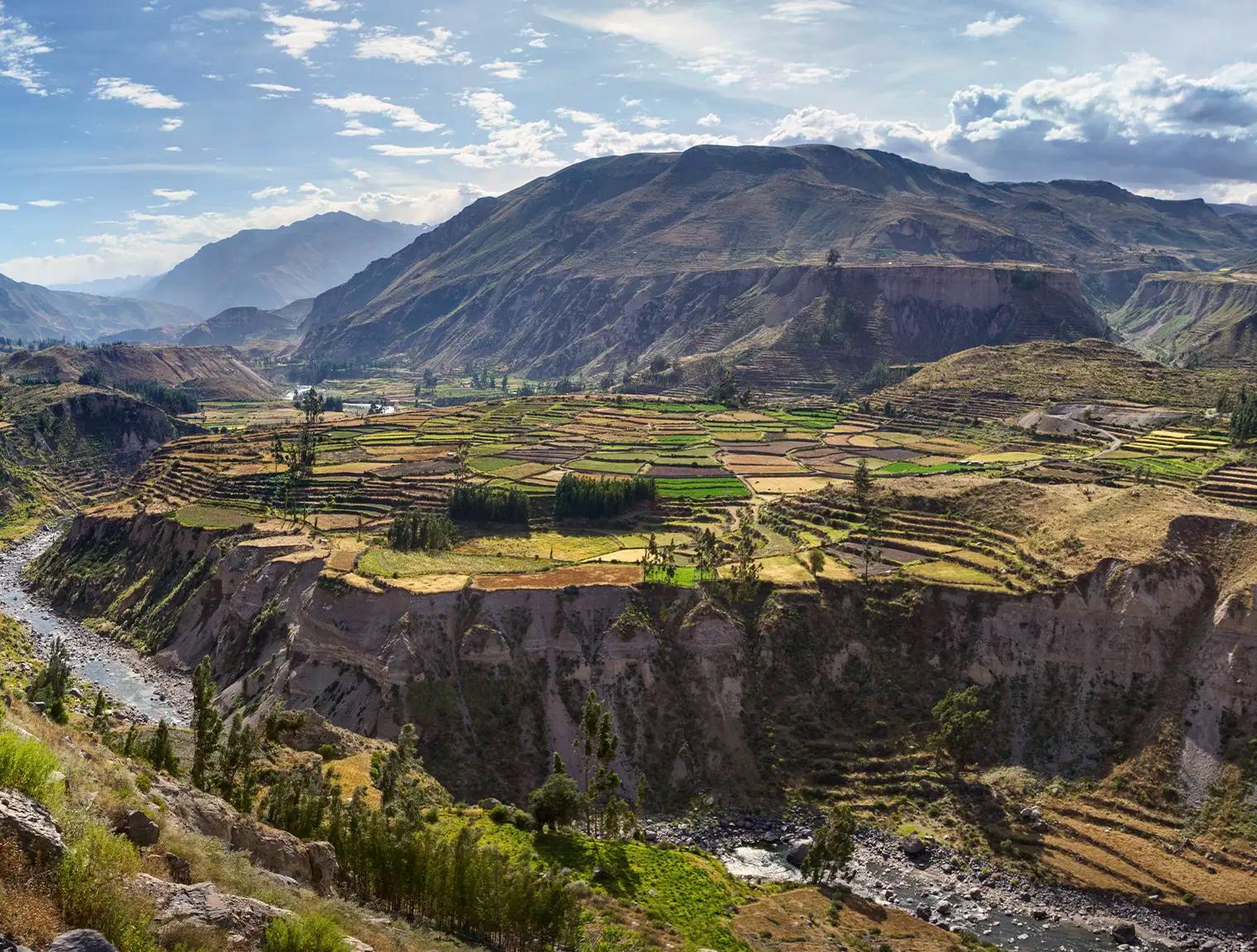

11 days from $2769
Machu Picchu, Cusco, Lima, , Paracas, Arequipa & Colca Canyon
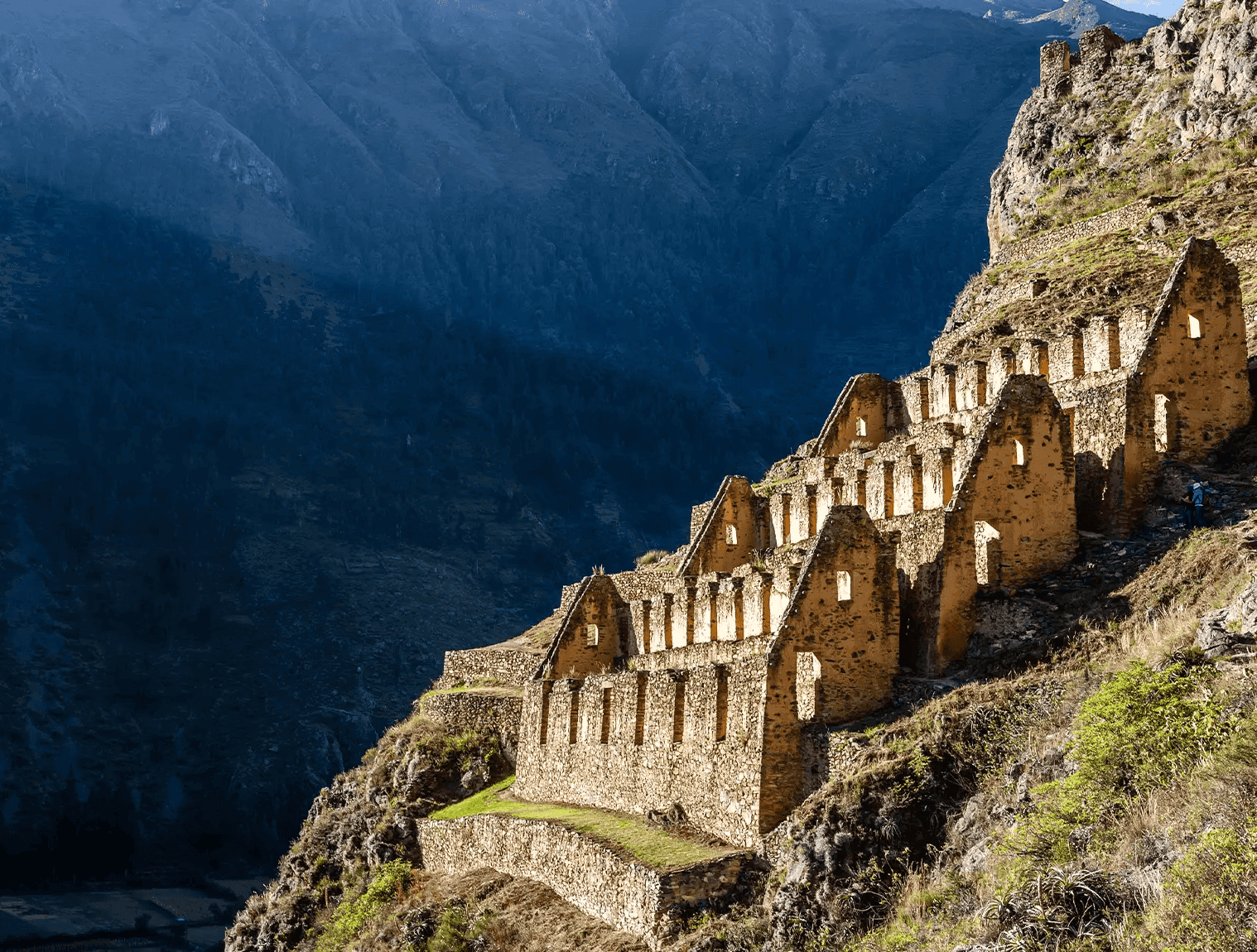
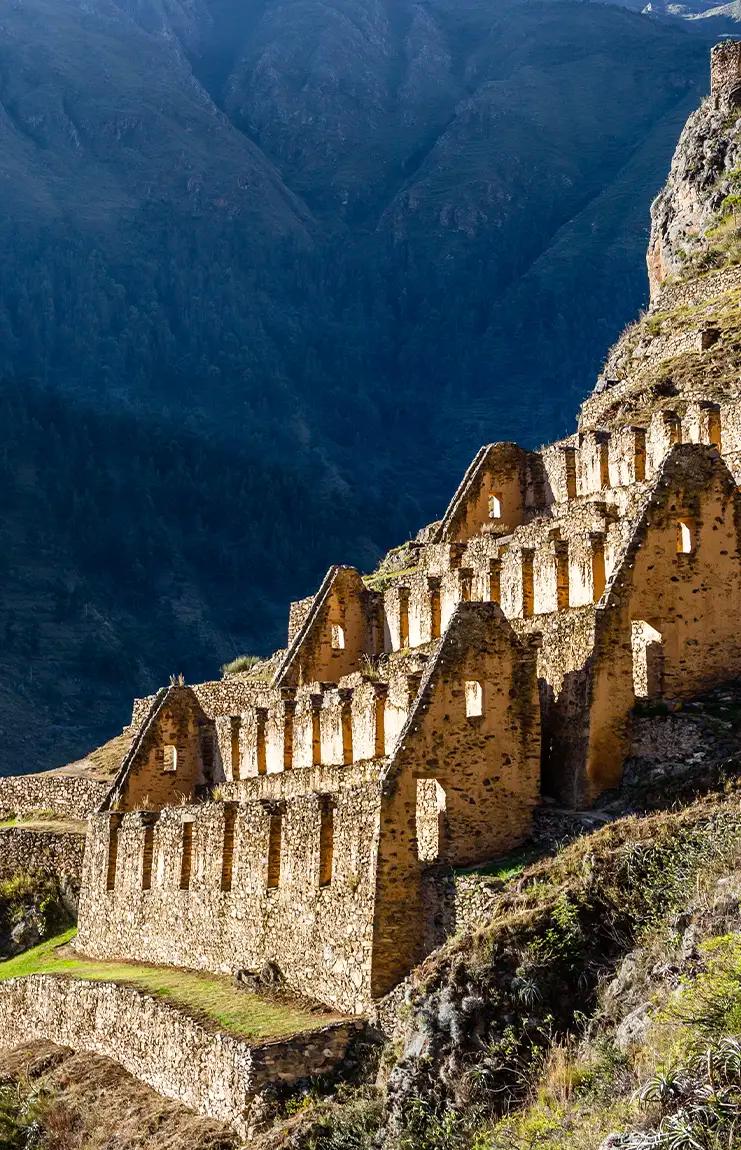
15 days from $3949
Machu Picchu, Cusco, Titicaca, Amazon, Lima, Paracas, Arequipa & Colca
Email: [email protected]
Sign up to receive our newsletter for great articles, stunning photos, and special deals.